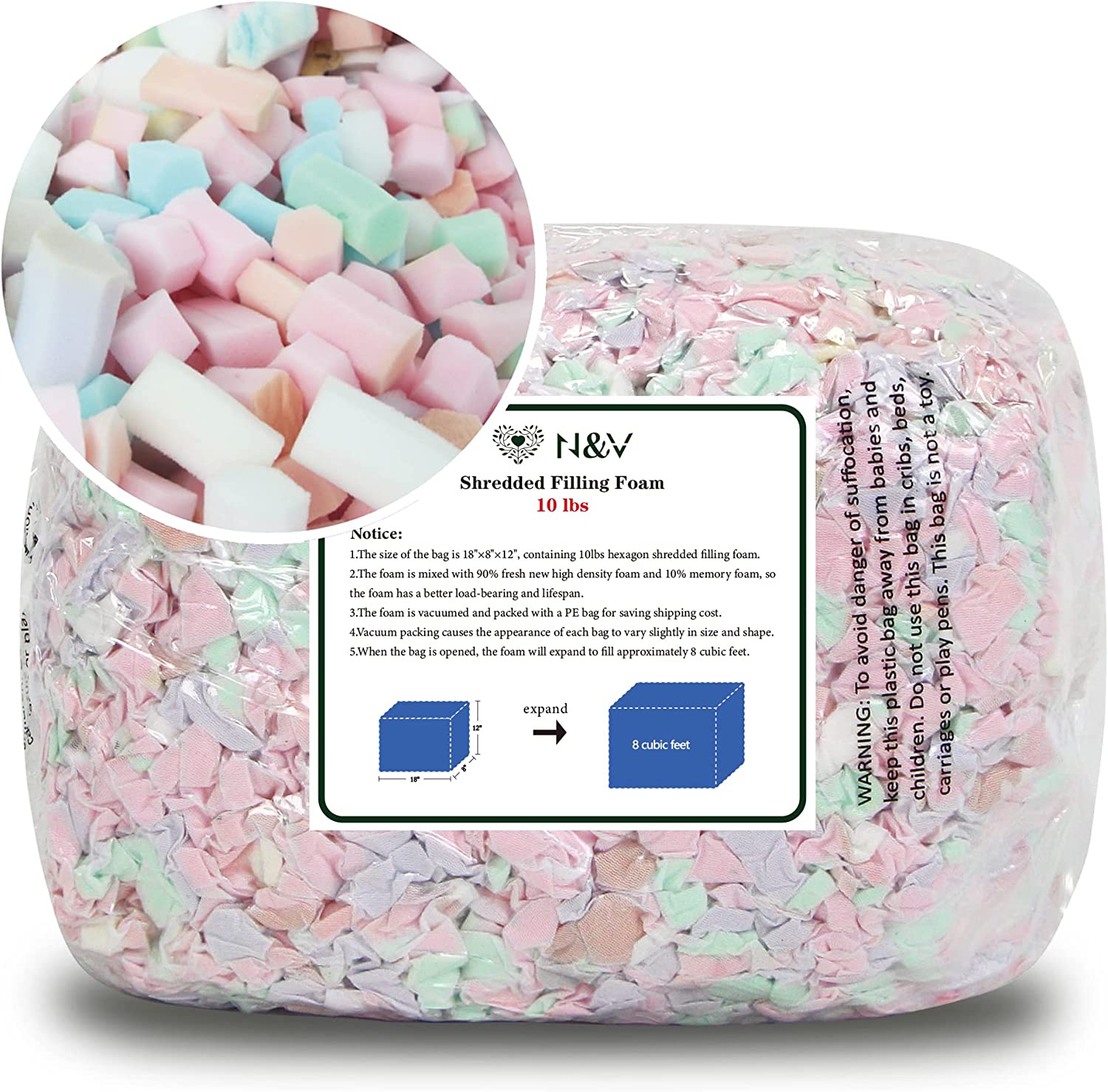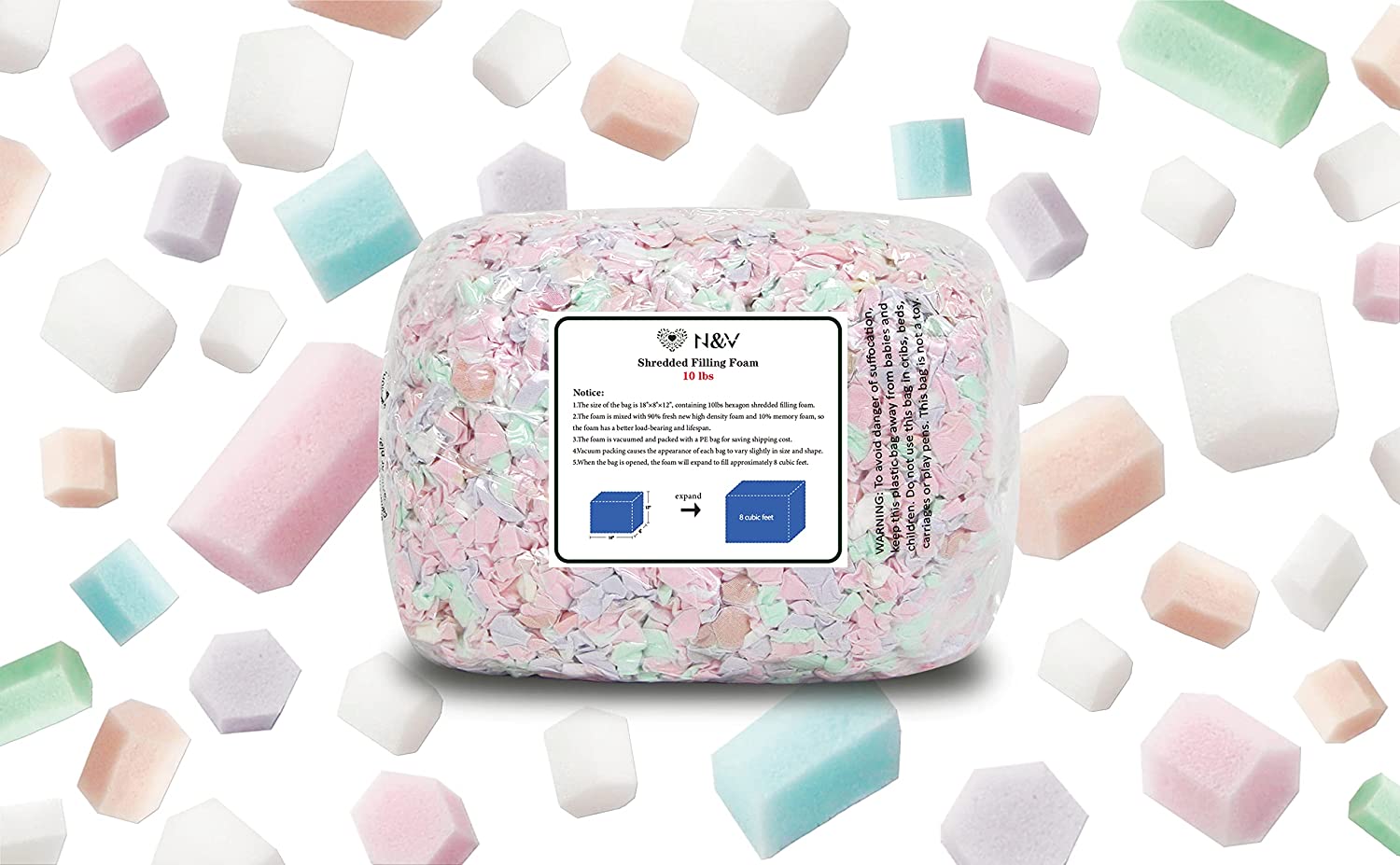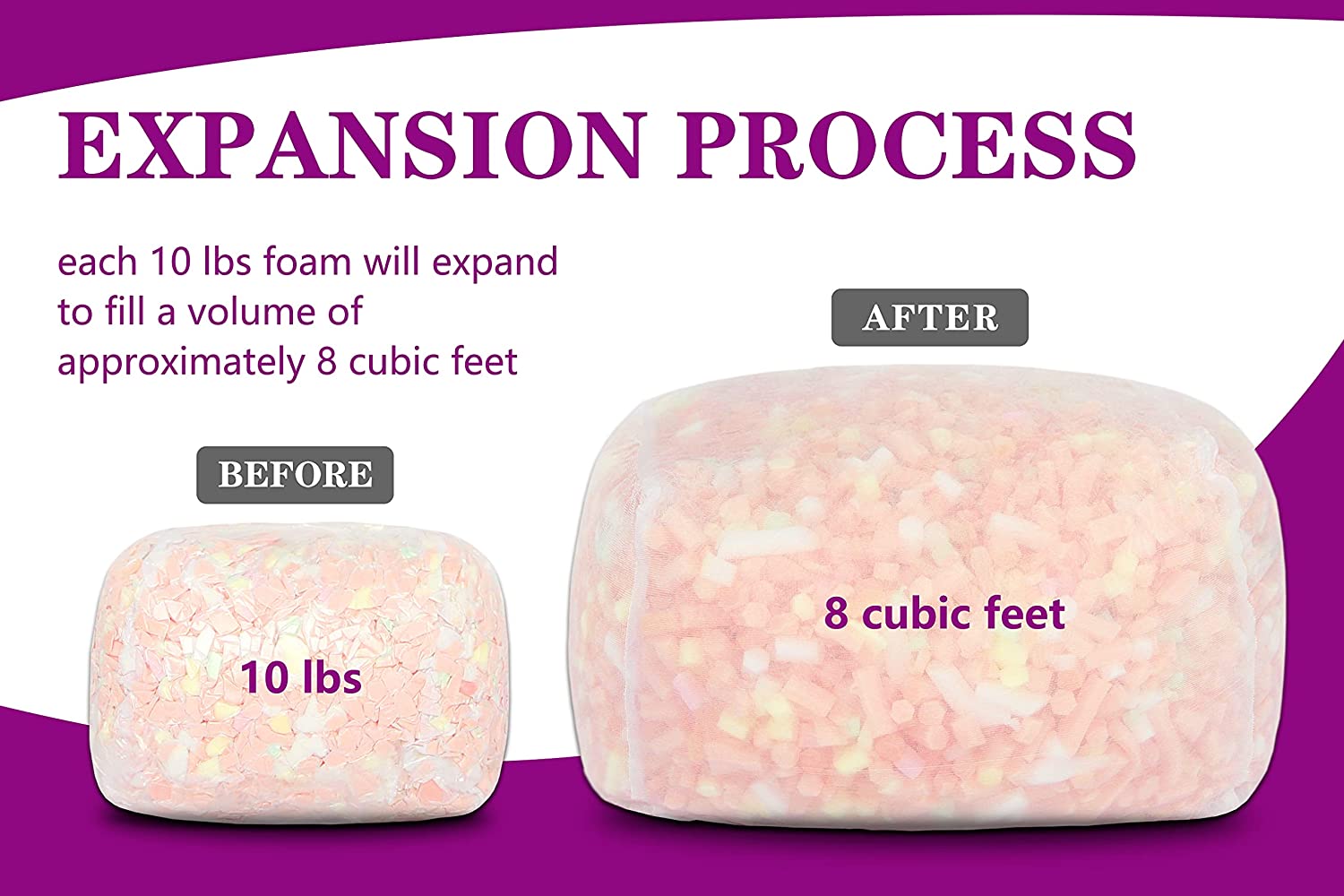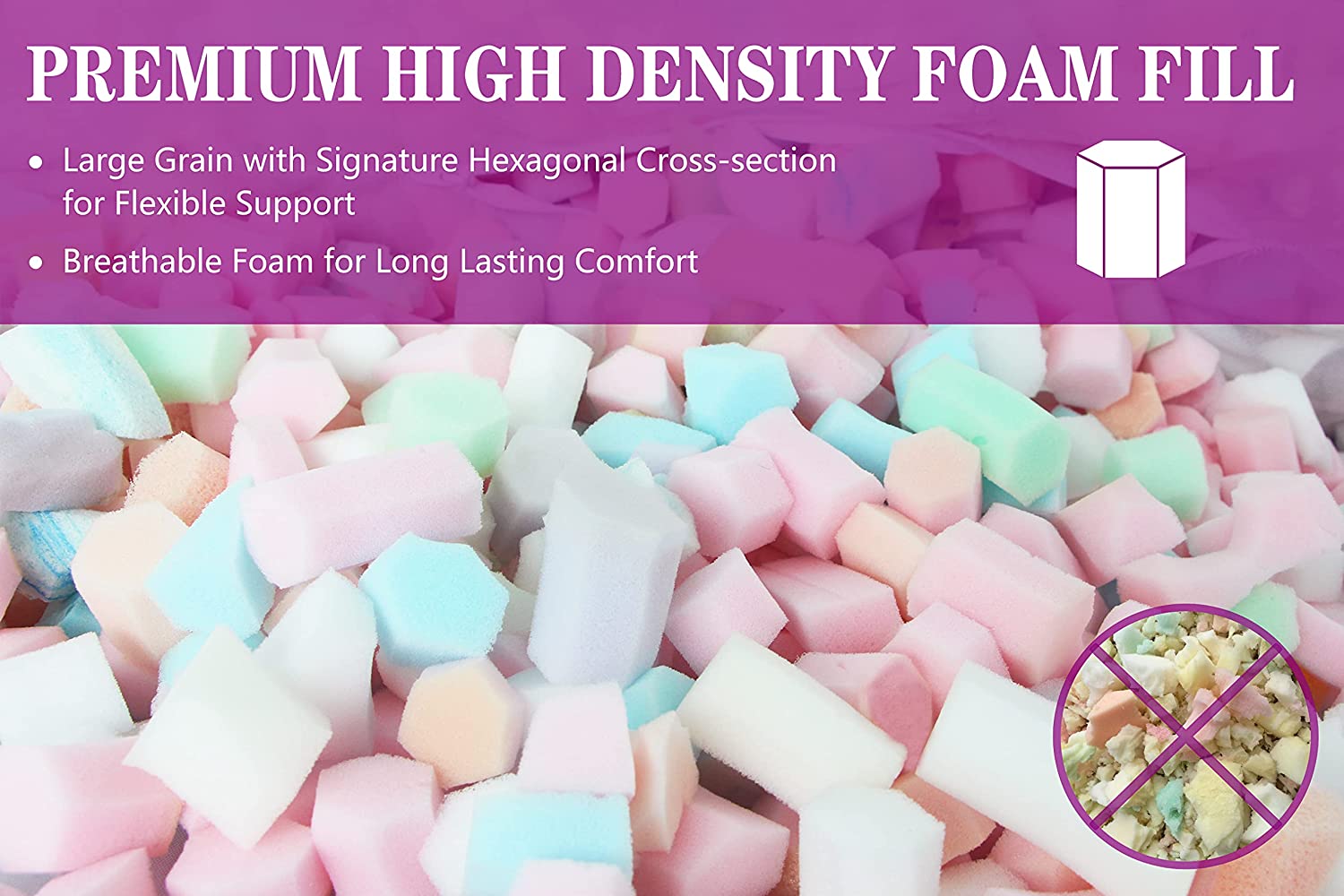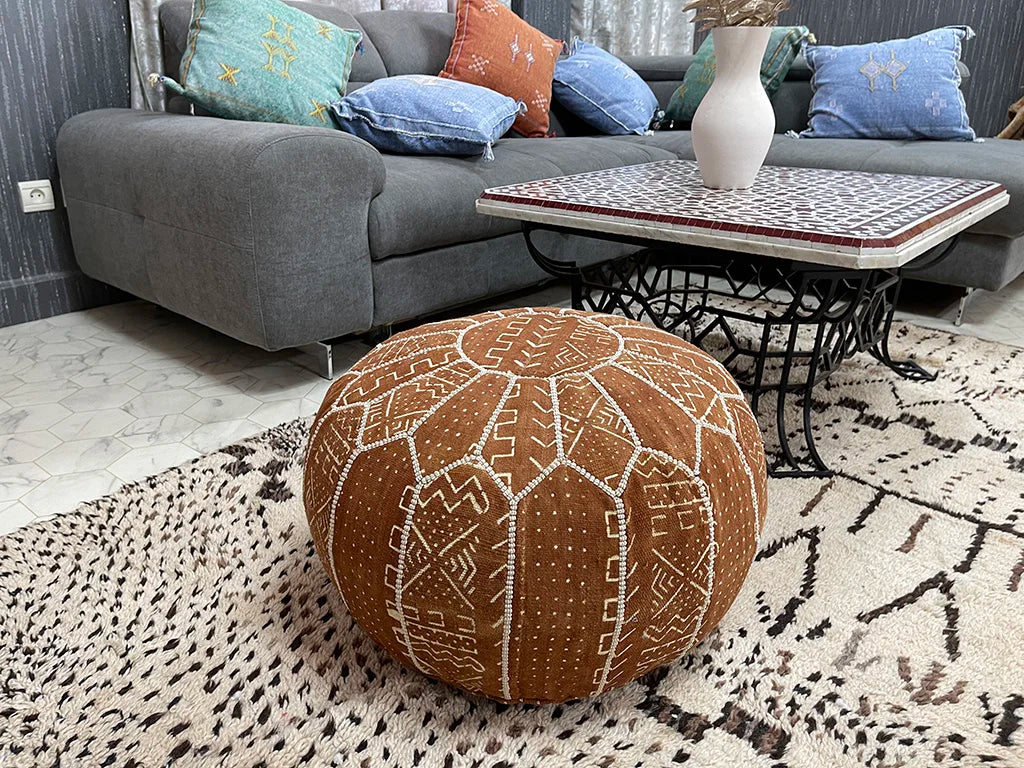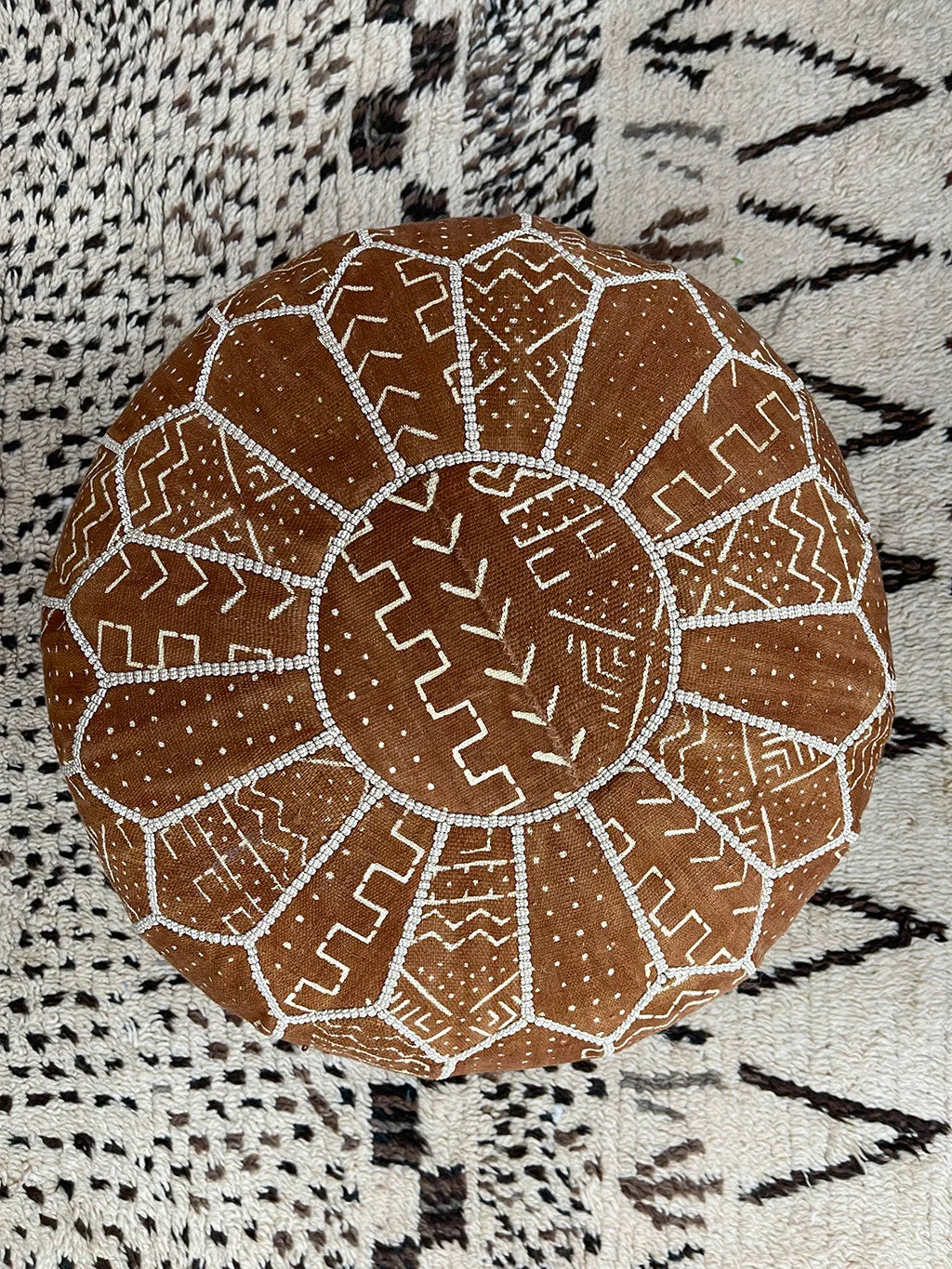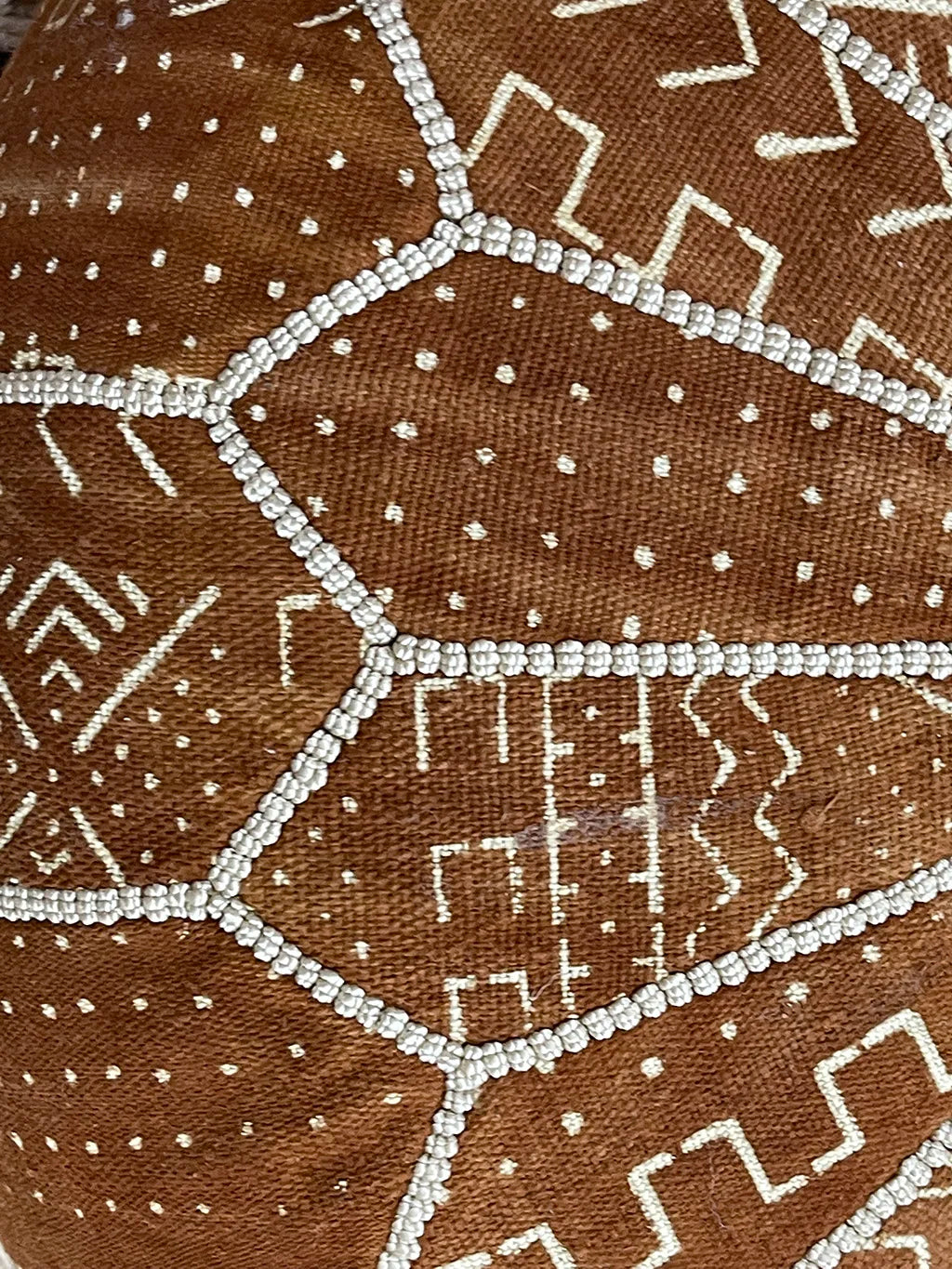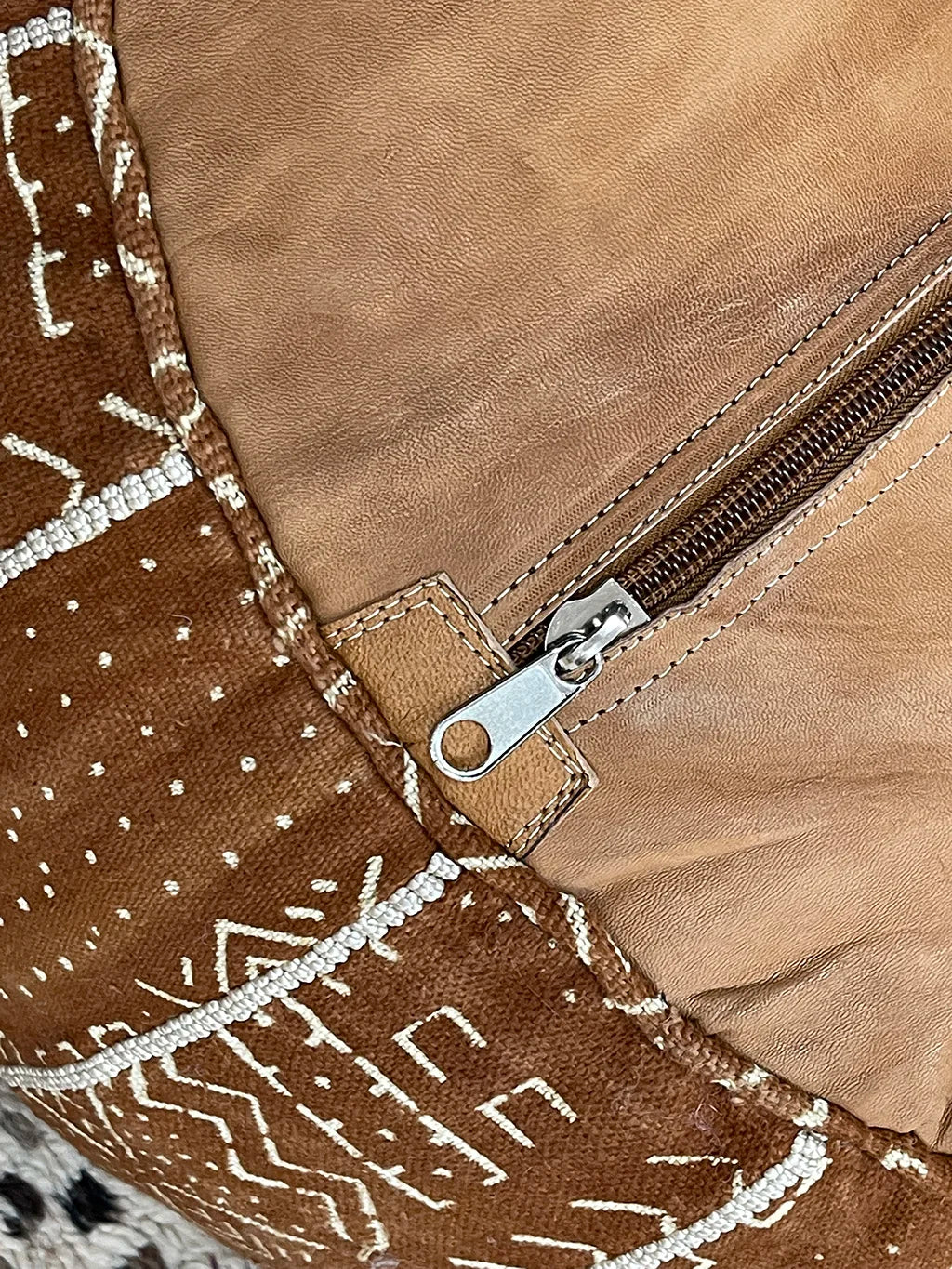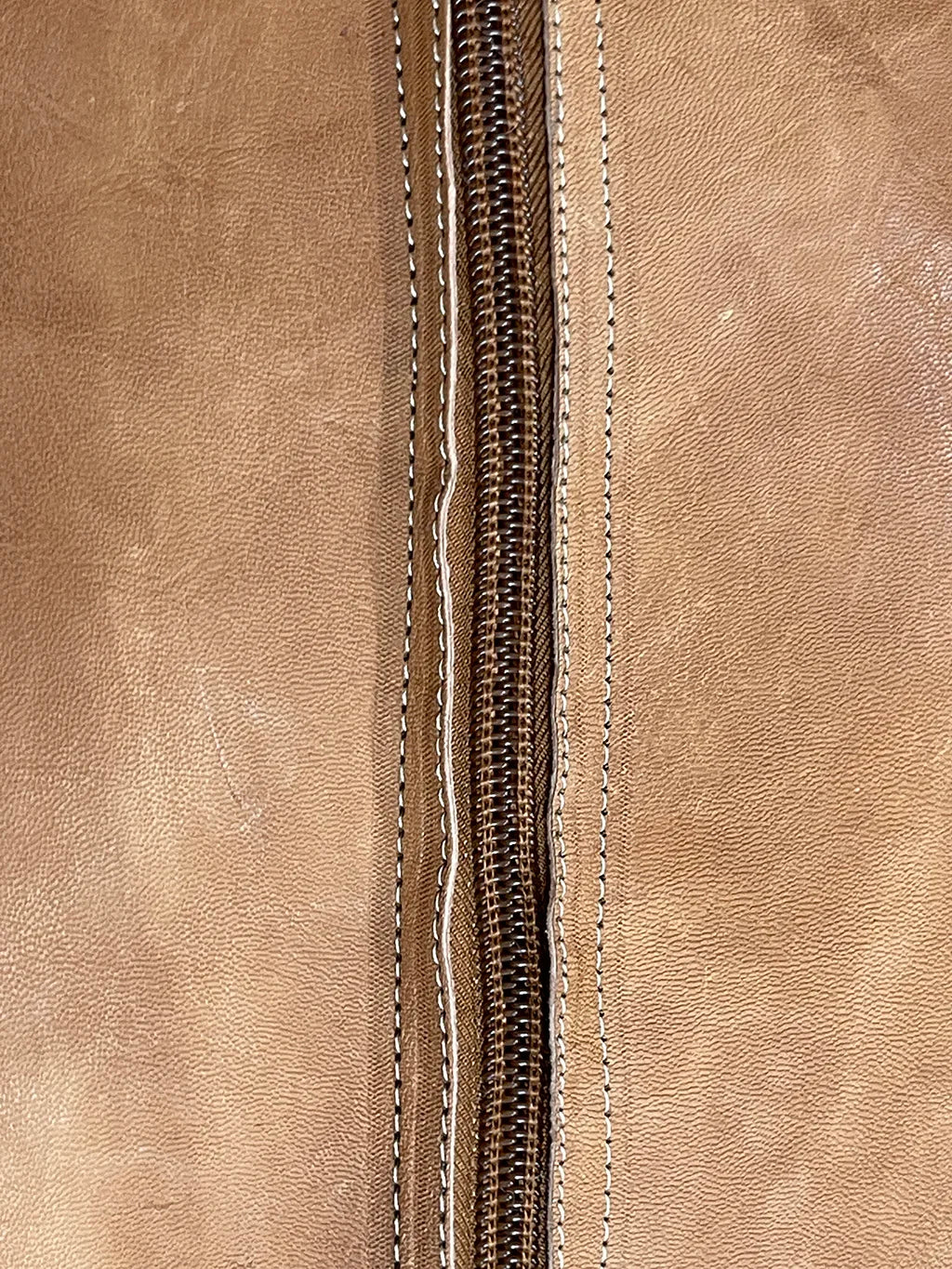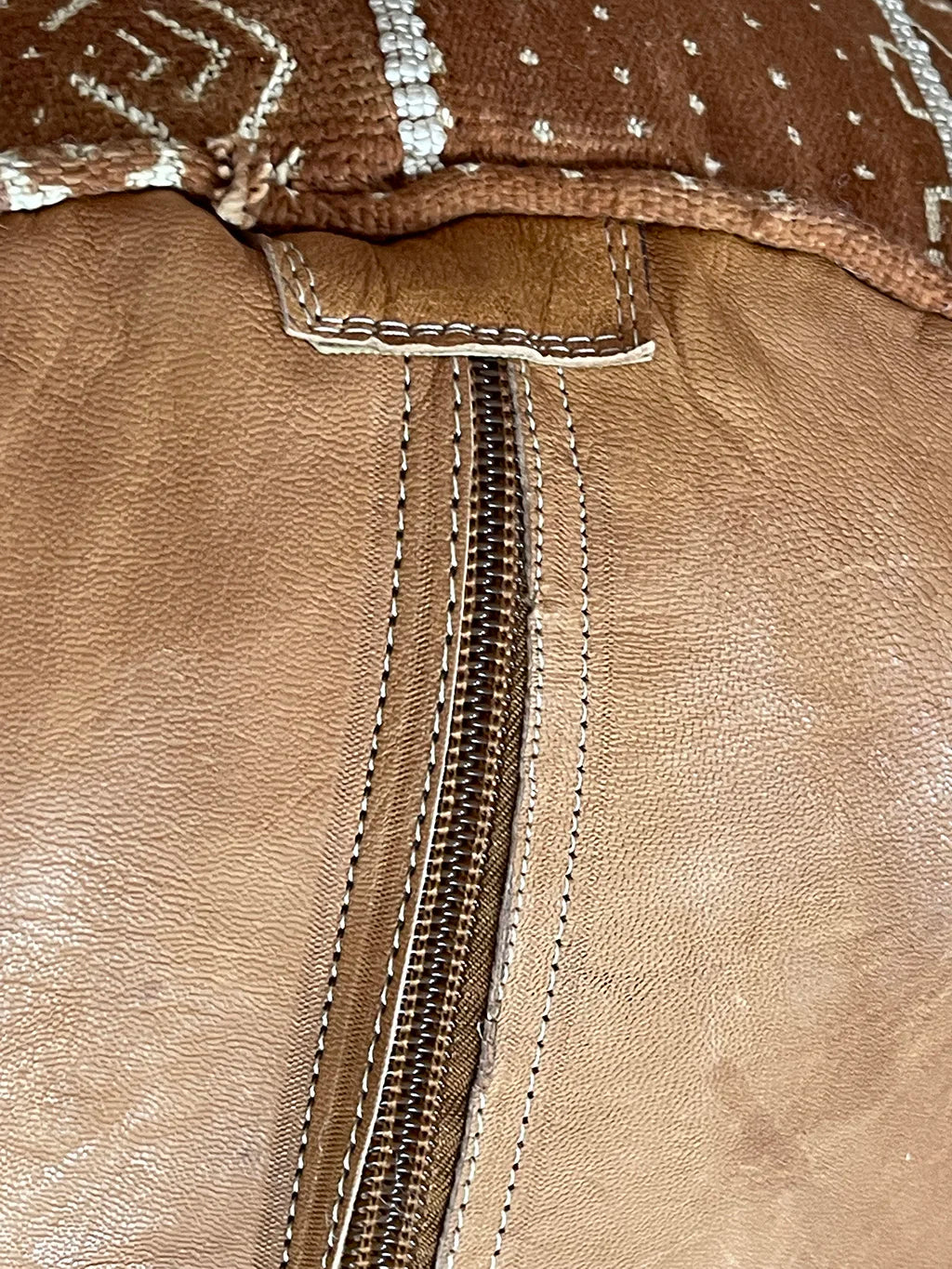A Moroccan pouf is more than just a trendy accessory—it’s a piece of Moroccan culture, handmade with care and designed to add comfort and charm to any space. But with so many colors, shapes, and materials available, how do you find the perfect pouf for your home? This guide will walk you through everything you need to know before buying a Moroccan pouf, so you can choose the ideal piece that fits your style, needs, and decor

Find Your Perfect Pouf!
Answer three quick questions to get a personalized recommendation.
1. What's your home's decor style?
1. Choose the Right Material
- Leather: The classic Moroccan pouf is made from genuine goat or cow leather, hand-dyed in Marrakech. Leather poufs are durable, develop a rich patina over time, and suit both modern and traditional spaces.
- Cactus Silk (Sabra): For a vegan and colorful option, cactus silk poufs feature a soft, slightly glossy look. They are perfect for adding a boho or vibrant touch to your living room or bedroom.
- Kilim or Wool: Some poufs use vintage kilim rugs or woven wool for a more textured, rustic feel.

Tip: Leather poufs are more robust and easy to wipe clean, while cactus silk and kilim poufs bring unique textures and colors to your space.
2. Pick the Perfect Size and Shape
- Standard Size: Most Moroccan poufs are round and measure around 20 inches (50 cm) in diameter and 12–14 inches (30–35 cm) high. This is perfect as a footrest, low seat, or side table.
- Larger or Smaller: Need more impact? Go for oversized poufs for extra seating or mini poufs for children’s rooms.
- Shapes: Classic round poufs are most common, but cube and square ottoman styles are also available for a modern look.

3. Decide on Color and Embroidery
- Neutrals (Tan, Brown, White, Black): Fit seamlessly into minimalist, Scandinavian, or modern decor.
- Bold Colors (Turquoise, Pink, Mustard, Green): Add a pop of color to boho or eclectic interiors.
- Embroidery & Patterns: Traditional poufs feature intricate hand-stitched embroidery, often in geometric or floral designs. Minimalist poufs have cleaner lines and simple stitching.

4. Think About Filling
- Unfilled Poufs: Most poufs are shipped unfilled to save on shipping costs. You can fill yours with recycled textiles, foam, polyester fiberfill, or even old clothes for a firm or soft feel.
- Pre-Filled Poufs: Some sellers offer poufs pre-stuffed and ready to use, but these may cost more in shipping.

5. How Will You Use Your Pouf?
- Footrest: Place in front of your sofa or reading chair for ultimate relaxation.
- Extra Seat: Handy for guests or in a playroom.
- Side Table: Add a tray on top and use as a coffee or side table.
- Decor Accent: Use as a bold accent in a bedroom, office, or entryway.
- Kids’ Room: Moroccan poufs are lightweight, safe, and loved by kids!

6. Tips for Buying an Authentic Moroccan Pouf
- Check the Seller: Buy from trusted shops or artisans with good reviews and clear return policies.
- Ask About Materials: Ensure the leather is genuine, ethically sourced, and dyed using safe processes.
- Look for Handmade Details: Irregularities in stitching and natural variations in leather are signs of true handmade quality.
- Read Reviews: Customer feedback can tell you a lot about durability, comfort, and customer service.

Frequently Asked Questions About Moroccan Poufs
A Moroccan pouf is a handcrafted ottoman or low seat, traditionally made in Morocco. It's considered an authentic piece of Moroccan art, created by skilled artisans using premium leather or other materials and timeless techniques. What makes them special is their blend of warmth, comfort, and cultural charm, reflecting a heritage of hospitality and relaxation. Each pouf tells a story of tradition, craftsmanship, and culture.
Moroccan poufs are primarily made from genuine leather, often goat or cow leather, which is hand-dyed in Marrakech. These leather poufs are known for their durability and develop a rich patina over time. For a vegan and colorful alternative, cactus silk (Sabra) is used, offering a soft, slightly glossy appearance. Some poufs also incorporate vintage kilim rugs or woven wool for a more textured, rustic feel.
The most common Moroccan poufs are round, typically measuring around 20 inches (50 cm) in diameter and 12–14 inches (30–35 cm) high, which is ideal for a footrest, low seat, or side table. However, they are also available in larger sizes for extra seating or smaller "mini poufs" suitable for children's rooms. While round poufs are classic, cube and square ottoman styles are also offered for a more modern aesthetic.
Moroccan poufs are incredibly versatile and functional. They can serve as a comfortable footrest, an extra seat for guests, or a stylish side table when topped with a tray. They are also perfect as a decorative accent in any room, whether it's a living room, bedroom, office, or entryway. Their lightweight nature makes them easy to move, and they are also a safe and cozy seating option for kids' rooms.
Moroccan poufs come in a wide array of colors and designs to suit various interior styles. Neutral colors like tan, brown, white, and black seamlessly integrate into minimalist, Scandinavian, or modern decor. For those seeking a vibrant touch, bold colors such as turquoise, pink, mustard, and green are available, perfect for boho or eclectic interiors. Traditional poufs often feature intricate hand-stitched embroidery with geometric or floral patterns, while minimalist designs offer cleaner lines and simpler stitching.
Most Moroccan poufs are shipped unfilled to reduce shipping costs. Customers can then fill them with various materials to achieve their desired firmness, such as recycled textiles, foam, polyester fiberfill, or even old clothes. While less common due to higher shipping expenses, some sellers do offer pre-filled poufs that are ready for immediate use.
To ensure authenticity and quality, it's recommended to purchase from trusted sellers or artisans with positive reviews and clear return policies. Key indicators of an authentic, handmade Moroccan pouf include genuine leather that is ethically sourced and dyed using safe processes. Handmade details like slight irregularities in stitching and natural variations in the leather are often signs of true craftsmanship. Reading customer reviews can also provide valuable insight into durability, comfort, and customer service.
To maintain a Moroccan leather pouf, it should be wiped with a damp cloth for cleaning. Additionally, applying leather conditioner every few months is recommended to keep the material supple and well-preserved. It's important to avoid using harsh chemicals for cleaning and to keep the pouf out of direct sunlight to prevent damage and maintain its quality over time. With proper care, a genuine leather Moroccan pouf can last for many years and develop a beautiful patina.
Final Thoughts
A Moroccan pouf is a beautiful investment in comfort, style, and artisan tradition. By considering material, size, color, filling, and use, you’ll find the perfect pouf to complement your home and tell your own story of Moroccan craftsmanship.
Ready to find your ideal pouf?
👉 Shop our full collection of authentic Moroccan poufs and discover the one that’s made for you.










